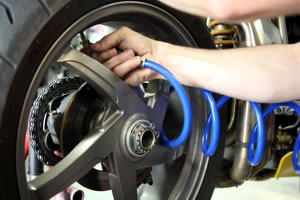What’s In Your Tires?
- Written by
- Published in News
- font size decrease font size increase font size
- Be the first to comment!
 My wife recently bought a new car for the first time in 11 years, but though she was excited about the end result, she was considerably less enthusiastic about the actual process.
My wife recently bought a new car for the first time in 11 years, but though she was excited about the end result, she was considerably less enthusiastic about the actual process.
Over the course of a month or so, she narrowed down the field, and, once having made her final selection, negotiations at the dealership got underway. All went well until our obliging sales representative placed a brochure for nitrogen-filled tires before us and launched into a pitch.
To make a long story short, this manufacturer’s dealer had bought into the idea that tires filled with nitrogen were superior to tires filled with plain old boring air. My wife was not impressed. Recognizing that a customer was about to walk away, the representative quickly backed down, and even went so far as to offer this “premium service” at no additional cost.
But all this got me thinking - what are the benefits of nitrogen-filled tires? For some time, nitrogen has been used to inflate tires in aircraft, military vehicles, race cars, and heavy off-road equipment. But this odourless, tasteless, inert gas has slowly been seeping into the everyday lives of the general public. Costco Wholesale, the single largest Michelin tire retailer in the world, started offering nitrogen fills for all new tires, and now provides the same service for previously air-filled tires too. Since then, in North America at least, other retailers have followed suit.
Proponents of nitrogen-filled tires – including the Canadian company Sym-Tech – typically cite three reasons in support of the practice:
- Nitrogen-filled tires remain properly inflated and so increase gas mileage.
- Nitrogen-filled tires wear out evenly, giving you more kilometres on the rubber.
- And, because of their improved wear, nitrogen-filled tires are less likely to pile up in landfills.

